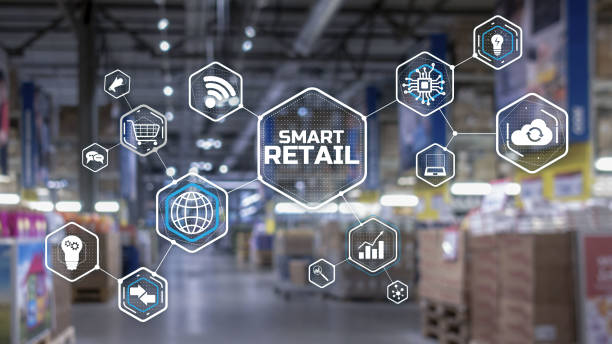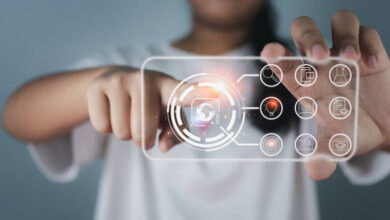
The retail industry is undergoing a transformative change with the integration of Internet of Things (IoT) technology.
IoT offers retailers the ability to connect devices, gather data, and gain insights that can revolutionise their operations.
This article explores how retailers can harness the power of IoT to optimise their operations, enhance customer experiences, and boost profitability.
What to know About IoT Technology

According to TechTarget, IoT refers to the network of interconnected devices that communicate and exchange data through the internet.
These devices can range from sensors and cameras to smartphones and wearable devices.
In a retail context, IoT technology enables the collection of real-time data from various touchpoints, providing valuable insights into customer behaviour, inventory levels, and operational efficiency.
Benefits of IoT in Retail Operations
IoT technology offers several benefits for retailers:
Enhancing Inventory Management
IoT-enabled sensors can monitor inventory levels in real time, helping retailers avoid overstocking or stockouts. This data-driven approach improves supply chain efficiency and reduces carrying costs.
Improving Customer Experience
Personalised shopping experiences can be created using IoT data.
Itransition.com says retailers can analyse customer preferences and buying patterns to offer tailored recommendations and promotions.
Streamlining Supply Chain
IoT helps optimise the supply chain by tracking shipments, monitoring the condition of goods, and identifying potential bottlenecks in the logistics process.
Real-time Data Analytics
Retailers can make informed decisions based on real-time data analytics. This enables them to respond swiftly to changing market conditions and consumer demands.
Implementing IoT in Store Management
Smart Shelves and Inventory Tracking
Smart shelves equipped with RFID tags and sensors enable retailers to monitor product availability and location. This leads to efficient shelf restocking and improved customer satisfaction.
Customer Behaviour Analysis
IoT devices such as cameras and beacons can capture data on customer movements and interactions within the store. Retailers can use this data to optimise store layouts and product placements.
IoT-Enabled Point-of-Sale Systems
IoT-integrated POS systems facilitate faster and more convenient transactions. They can also collect data on purchase history, enabling retailers to offer personalised discounts and rewards.
Ensuring Data Security and Privacy
With the increased connectivity of IoT devices, ensuring data security and privacy is crucial. Retailers must implement robust cybersecurity measures to protect sensitive customer information.
Successful IoT Implementation in Retail
Example 1: Amazon Go
Amazon Go stores utilise a combination of sensors and cameras to enable a checkout-free shopping experience. Customers can pick up items and leave the store without going through a traditional checkout process.
Example 2: Zara
Zara uses RFID technology to track inventory across its stores. This helps in restocking products efficiently and reduces instances of out-of-stock items.
Challenges and Considerations
Implementing IoT in retail comes with challenges such as initial setup costs, integration with existing systems, and data privacy concerns.
Retailers must carefully plan their IoT strategy to overcome these challenges.
Future Trends in IoT for Retail
The future of IoT in retail holds exciting possibilities. Trends such as AI-driven customer interactions, hyper-personalization, and the integration of augmented reality (AR) are poised to shape the retail landscape.
Implementing IoT in Marketing Strategies
Retailers can use IoT-generated data to create targeted marketing campaigns.
By understanding customer preferences and behaviours, retailers can tailor promotions and advertisements to specific customer segments.
This personalised approach enhances the effectiveness of marketing efforts and increases customer engagement.
Overcoming Data Privacy Concerns
While IoT offers numerous benefits, it also raises concerns about data privacy. Retailers must ensure that customer data is collected, stored, and used ethically and securely.
Implementing transparent data usage policies and obtaining customer consent are essential steps to build trust and address privacy concerns.
Enhancing Supply Chain Visibility
IoT technology enables retailers to gain real-time visibility into their supply chain operations.
By tracking products from manufacturer to store shelves, retailers can identify inefficiencies, reduce delays, and optimise the movement of goods.
This leads to a more efficient and responsive supply chain.
IoT and Sustainable Retail Practices
IoT can contribute to sustainable retail practices by enabling better energy management, reducing waste, and promoting eco-friendly initiatives.
Retailers can use IoT data to monitor energy consumption, optimise lighting and HVAC systems, and implement efficient waste management processes.
The Role of AI in IoT for Retail
Artificial Intelligence (AI) plays a crucial role in unlocking the full potential of IoT in retail.
AI algorithms analyse vast amounts of IoT-generated data to identify patterns, trends, and insights.
This data-driven approach empowers retailers to make informed decisions and create more personalised customer experiences.
Embracing IoT Transformation
As technology continues to evolve, retailers must remain adaptable to new developments in IoT.
Embracing IoT transformation requires a culture of innovation, continuous learning, and strategic investments.
By staying updated and embracing change, retailers can harness the full potential of IoT to stay competitive in the ever-changing retail landscape.
With these additional headings and content, the article further explores the implementation of IoT in marketing, supply chain, sustainability, the role of AI, and the future of IoT in retail.
This comprehensive coverage provides readers with a well-rounded understanding of how IoT can revolutionise the retail industry.
Now, let us look into the most frequently asked questions about How to optimise retail operations using IoT technology.
What is IoT technology in retail?
IoT technology in retail refers to the integration of interconnected devices that gather and exchange data to enhance various aspects of retail operations.
How can IoT improve inventory management?
IoT-enabled sensors can provide real-time data on inventory levels, helping retailers optimise stocking levels and reduce operational costs.
What is the role of IoT in customer experience?
IoT enables retailers to collect data on customer behaviour and preferences, allowing for personalised shopping experiences and targeted marketing efforts.
Is data security a concern in IoT implementation?
Yes, data security is a significant concern in IoT implementation. Retailers must prioritise cybersecurity measures to protect sensitive customer data.
What are some successful examples of IoT implementation in retail?
Examples include Amazon Go’s checkout-free stores and Zara’s use of RFID technology for inventory tracking.
What challenges can retailers face when implementing IoT?
Retailers may encounter challenges such as high initial costs, integration complexities, and data privacy issues when implementing IoT.
What are the future trends in IoT for retail?
Future trends include AI-driven customer interactions, hyper-personalization, and the integration of AR to enhance the shopping experience.
Conclusion
IoT technology is revolutionising the retail industry by offering data-driven insights and automation opportunities.
By leveraging IoT devices and data analytics, retailers can optimise their operations, improve customer experiences, and stay competitive in an evolving market landscape.
As IoT continues to advance, retailers should embrace its potential to reshape the way they do business.








